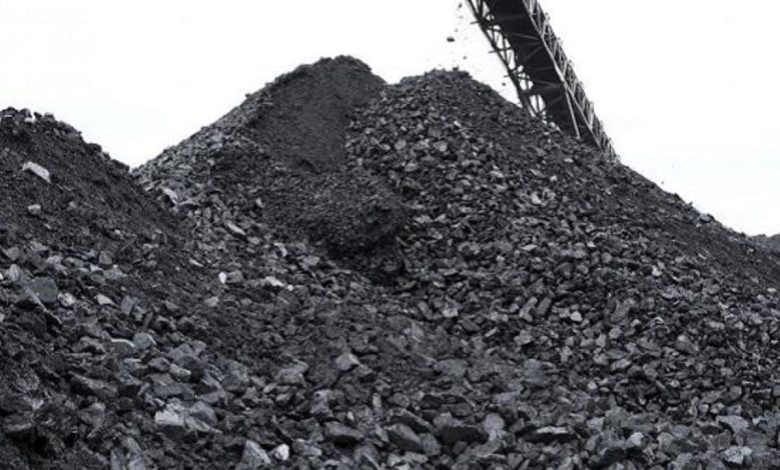By Halili Letea
Tanzania is experiencing an escalation in coal production since February 2022. We have witnessed a more than double increase in coal production.
Tanzania in the Figure 2022 report shows that a record 2.5 tonnes of coal was produced in 2022 compared with 976,319 tonnes the year before. In 2020 a total of 689,959 tonnes will be produced in 2020.
The increase led to export increase significantly and reached $160.4 dollars (Sh384.96 billion in 2022 compared to $13.2 dollars (Sh31.68 billion) in 2021 according to the 2022 State of the National Economy report. That accounts for more than 12 times the increase in that period.
According to the report “increase in coal sales was due to the increase in the amount sold abroad as well as the price in the market due to increased demand. This includes availability of new markets where European Union countries such as the Netherlands began to buy coal from Tanzania”.
That also led to an increase in the value of sales of goods to the European market, which went up by 7.0 percent to $955.6 million (Sh2.29 trillion) compared to the year before.
Why demand for coal export increase
The Ministry of Mineral Report indicated that there was an increase in the number of permit requirements for mineral export and coal was leading.
A total of 10,318 licenses for mineral exports with a value of $3,240.35 million were issued in 2022, a 86.7 percent increase in the number of licenses. Only 5,526 permits with a value of $3,046.23 million were issued in 2021.
“This was due to the high demand for coal abroad which led to an increase in coal mining in the country” noted the report.
The report also noted that, “increase in coal sales was due to the increase in the amount sold abroad as well as the price in the market due to increased demand. This includes availability of new markets where European Union countries such as the Netherlands began to buy coal from Tanzania”.
The Citizen also established that other countries which import coal are India, Comoro Islands, Zanzibar mentioned by few.
For European countries the European Central Bank (ECB) Economic bulletin 2022 noted that the war in Ukraine has generated a sharp increase in energy prices and significant volatility in energy markets.
“Amid fears of disruptions to energy supplies and increasingly strict sanctions on the Russian energy sector, prices have fluctuated, in particular as markets have tried to assess the potential implications for global energy supplies. Given their heavy reliance on Russian supplies before the invasion, euro area energy markets have been especially affected” it says.
The ECB report shows that only 16.2 percent of energy is domestically produced (EU and Norway) and the rest is imported. Russia accounted for 23 percent and 43 percent of euro area crude oil and coal imports respectively in 2020, which represented 9 percent and 2 percent of the euro area’s primary energy consumption. However, the euro area is particularly dependent on natural gas imports from Russia, which in 2020 amounted to 35percent of euro area gas imports and represented 11 percent of the euro area’s primary energy consumption.
Coal a main source for global warming
Fossil fuels are formed from the decomposition of buried carbon-based organisms that died millions of years ago. They create carbon-rich deposits that are extracted and burned for energy. They are non-renewable and currently supply around 80 percent of the world’s energy.
They are also used to make plastic, steel and a huge range of products. Main fossil fuel – coal, oil and gas which according to studies have big impacts on climate change and our planet.

The Intergovernmental Panel on Climate Change (IPCC) has found that emissions from fossil fuels are the dominant cause of global warming. In 2018, 89 percent of global Carbon dioxide emissions came from fossil fuels and industry.
Coal is the dirtiest of them all, responsible for over 0.3 Centigrade of the 1C increase in global average temperatures. This makes it the single largest source of global temperature rise. Oil releases a huge amount of carbon when burned – approximately a third of the world’s total carbon emissions. Natural gas is often promoted as a cleaner energy source than coal and oil. However, natural gas is still a fossil fuel and accounts for a fifth of the world’s total carbon emissions.
Knowing that the world is now discouraging the use of fossil fuel and shift to renewable sources of energies.
This demand increase of coal is alarming. Are we really cutting down use of fossil fuel?
Difficult to adhere with COP27 recommendations
UN Climate Change Conference the 27th Conference of the Parties (COP27) among the takeaway was to maintain a clear intention to keep 1.5°C within reach. The world is in a critical decade for climate action. This is not hyperbole – the UN’s Intergovernmental Panel on Climate Change says limiting warming to around 1.5°C requires global greenhouse gas emissions to peak before 2025 at the latest, and be reduced by 43 percent by 2030. That’s seven short years from now.
The 2022 surface temperature was 0.86 °Celsius warmer than the 20th-century average of 13.9 °C and 1.06 ˚C warmer than the pre-industrial period (1880-1900). Is 1.5°C this feasible?
Environment impact on coal production in southern Tanzania
Tanzania’s coal reserves are estimated at 1.9 billion tonnes, 25 percent of which are proven. In recent geological exploration, the ministry believes there is a potential reserve of 5 billion tonnes. Large coal projects are located in south-western Tanzania and include the Ngaka coal mine, the Rukwa coalfields, and the Kiwira coal mine.
Currently there are two big operations that are extracting coal . The Ngaka coal mine in Ruvuma Region is operated under the banner of Tancoal Energy which is a joint venture between Intra Energy Tanzania limited and the state owned National Development Corporation (NDC).
Another Kiwira coal mine is in Songwe Ileje district and is wholly owned by the State Mining Corporation (Stamico).
Due to the ongoing increase in coal mining as we have noted by increase in the number of production and mining licenses there are also environmental effects.
In 2020 and 2022 where coal production was less than one million tonnes there were claims of environmental pollution in some villagers which includes water pollution, dust in roads and the tracks path through from the sources to Mtwara port for export.
There have also been reports about the health impact of coal mining to neighboring residents in Ruanda Ward where Ngaka coal mine is located. The problems started after it was found that the water of the rivers surrounding the coal mine contains sulfur which is a threat to people. There were also several mass fish deaths among other effects.
Despite that there have been claims that little has been done to change that and residents are still complaining.


